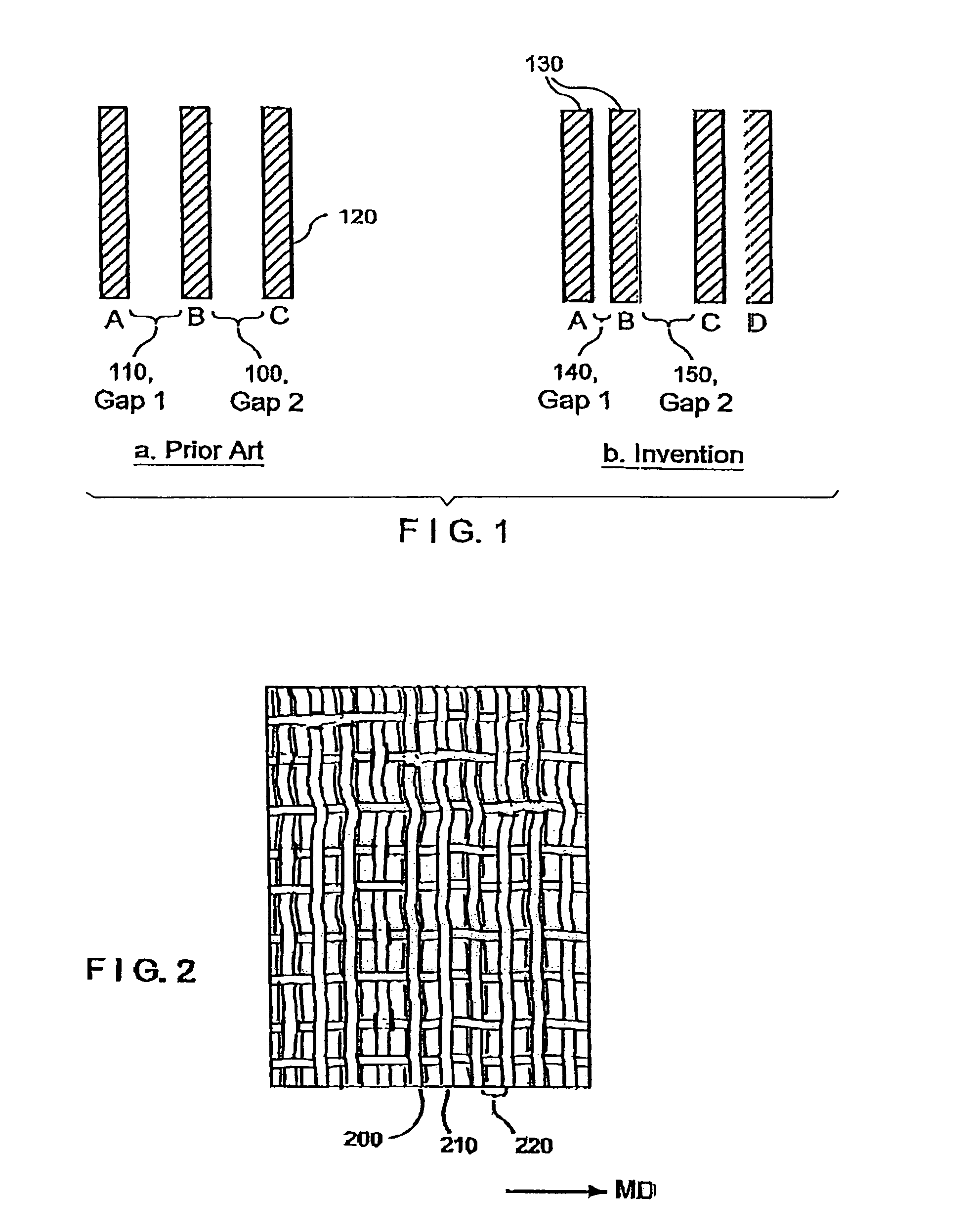Fabric with three vertically stacked wefts with twinned forming wefts
a technology of twinned forming wefts and fabric, applied in the field of papermaking arts, can solve the problems of short fabric life, poor fabric quality and machine efficiency, common fabric deficiency is a characteristic diagonal, etc., and achieves more cross-directional stability and stiffness, and extra stability in the cross-direction. , the effect of improving the drainage properties of the fabri
- Summary
- Abstract
- Description
- Claims
- Application Information
AI Technical Summary
Benefits of technology
Problems solved by technology
Method used
Image
Examples
Embodiment Construction
[0034]FIG. 1 is a schematic view providing a comparison between the weft / shute spacing in the top (or forming) layer of prior art fabrics and the present invention. Each vertical stripe in the figure represents a forming side weft. FIG. 1a shows the weft spacing according to the prior art, while FIG. 1b shows the weft spacing according to the present invention. Note that in FIG. 1a, the spacing of Gap 1110 is approximately equal to the spacing of Gap 2100. Whereas, in FIG. 1b, the wefts are unevenly spaced. Because of the uneven spacing between wefts A and B, and B and C; wefts A and B are characterized as twinned, or paired, wefts 130. This twinning / pairing is considered beneficial as the non-uniform spacing helps promote drainage and conceals the diagonal sheet mark.
[0035]A sample forming fabric has been produced in accordance with the teachings of the present invention. Measurements taken from this sample fabric show that the forming side wefts 120 have a cross-sectional diameter...
PUM
| Property | Measurement | Unit |
|---|---|---|
| Stability | aaaaa | aaaaa |
Abstract
Description
Claims
Application Information
 Login to View More
Login to View More - R&D
- Intellectual Property
- Life Sciences
- Materials
- Tech Scout
- Unparalleled Data Quality
- Higher Quality Content
- 60% Fewer Hallucinations
Browse by: Latest US Patents, China's latest patents, Technical Efficacy Thesaurus, Application Domain, Technology Topic, Popular Technical Reports.
© 2025 PatSnap. All rights reserved.Legal|Privacy policy|Modern Slavery Act Transparency Statement|Sitemap|About US| Contact US: help@patsnap.com



